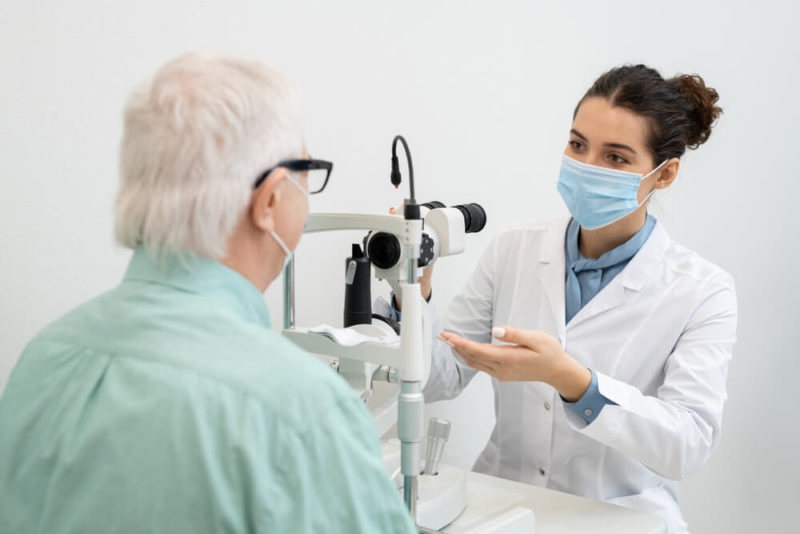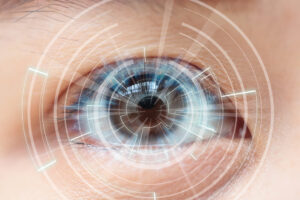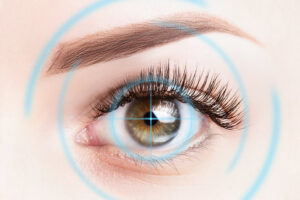
No matter how small they are, you shouldn’t ignore health problems. Most of us know that minor issues will require less complex resolutions, so you should treat an illness before it’s too late. The same goes for Keratoconus. In the early stages, the problem can be resolved with glasses. However, if you are further along, you might need some more help.
In most cases, you won’t need keratoconus surgery. There are procedures like corneal cross-linking that will stop your symptoms from getting worse and help you avoid going under the knife.
Also, Intacs for keratoconus has helped a number of patients avoid getting a corneal transplant. So, as you see, there are options for your keratoconus treatment.
Keep reading if you want to know more about this disease of the cornea, how it’s diagnosed and treated, and what are your options for getting better.
Cross-Linking Is the Primary Way to Treat Keratoconus
Keratoconus is a condition that makes the front part of your eye – the cornea, thinner and weaker. That causes the cornea to bulge into a shape that doesn’t allow the eye to have proper focus. These problems will cause vision distortion and won’t allow the subject to see correctly. For most patients, cross-linking is the best form of keratoconus treatment.
The goal of a cross-linking procedure is to stop the cornea from further bulging. By adding bonds between the collagen fibers, the cornea can stay stable and stop further bulging. Cross-linking is the only procedure that allows the cornea to stay in the same condition, stopping the progress of the patient’s keratoconus.

How Does the Doctor Perform the Cross-Linking Procedure (CXL)
The entire cross-linking procedure takes about an hour to complete, and most importantly, it isn’t painful at all. Firstly, the doctor will give you drops to numb your eyes. This way, they’ll be able to work on them without you feeling any pain. Then, you’ll get drops that will allow your eyes to absorb more light, and after your cornea absorbs them, you’re ready for surgery. This takes about 30 minutes.
During the surgery, the patient lays down and looks at a light. Avedro’s and Peschek cross-linking technology are the most reliable and popular FDA-approved options out there. Picking any of them to stop your progressive keratoconus would be the best solution.
What to Do After a Cross-Linking Procedure
- Some patients experience mild discomfort after the surgery, which is easily treated with the medicine your doctor can provide.
- Contacts for keratoconus help your eyes heal. In case they fall out don’t put them back in, but call your doctor instead.
- You may be sensitive to light for some time. Sunglasses are the easiest way to deal with unwanted sunlight in your eyes.
- Don’t rub your eyes for a few days.
- If you experience stronger pain, vision worsening or other difficulties, contact your doctor and let them know.
Doctor’s Diagnosis Will Determine if You Need Keratoconus Surgery
Before you get any type of keratoconus treatment you will need to go into the doctor’s office and get a few tests done. The doctor’s diagnosis will determine if you need an Intacs procedure, contacts for keratoconus, or something a bit more serious like keratoconus surgery. Luckily, you won’t have to go through a lot in the visit. Four quick tests will allow the doctor to make an assessment of the situation and inform you of the next steps you need to take.
The most common tests a doctor makes to diagnose keratoconus are:
- Refraction Test
Most eye exams include a refraction test, so you’ve probably had at least one in your lifetime and know it’s nothing to be scared of. It’s also known as the vision test, and the name says all about it. This test will show what type of contacts for keratoconus do you need (and if you need any). Score a perfect 20/20, and you’re good to go. Light bends properly when it reaches your eyes, and you don’t need any help seeing small letters from afar.
- Keratometry
The simplest explanation of keratometry is that it measures the curvature of the cornea and determines astigmatism. It can be done both manually and automatically depending on your doctor’s preferences.
- Slit-Lamp Exam
The doctor will look into the shape of your cornea by doing a Slit-lamp exam. Before you sit in front of the instrument, your ophthalmologist may put drops in your eye to get a better look, dilate your pupils, and wash away tears.
- Computerized Corneal Mapping
To get perfect focus and vision, the curvature of your cornea should be ideal. If it’s too flat or steep, your vision won’t be as good. Corneal topography will create a 3D map of the cornea, which will allow your doctor to notice the abnormalities with the shape of your eyes.
An Intacs Procedure Will Reshape the Patient’s Cornea

Until CXL and Intacs for keratoconus were invented, a cornea transplant was the go-to procedure for solving this eye condition. If the patient suffering from keratoconus can no longer see even with the help of contacts or glasses, getting an Intacs procedure is the best option.
Intacs are small plastic arcs that are inserted in the patient’s eyes, used to flatten the cornea and turn it back to the shape it was once in. Though this procedure won’t give the patient 20/20 vision, it will allow them to see well and wear contact lenses once again. With some subjects, going back to wearing glasses will be an option as well.
The entire Intacs procedure doesn’t take long and is usually finished within 30 minutes. Most patients don’t have any alarming complications after the surgery, but visiting your doctor regularly is the safest thing to do after getting Intacs for keratoconus. The doctor will make sure everything is healing properly, and you can let them know about any difficulties you may have been experiencing.
Some of the problems that may occur after an Intacs surgery are:
- Eye Infections
If you’re feeling like something is in your eye, your eyes hurt, or feel like they are burning, you may be suffering from an infection. Other symptoms like itchy eyes or tender eyelids might be the sign as well. Nevertheless, if you’re having any of these problems, consult with your doctor. They will make the final call and let you know how to treat the issue.
- Poor Night Vision
Intacs are one of the reasons that may be stopping you from having good vision at night. Talk about this with your doctor and see what’s causing it.
- Seeing Glare
It may be hard to spend time in well-lit rooms and look directly at the light for some time after an Intacs surgery. This is pretty common and nothing to worry about long-term.
- The Recovery Time
Some people struggle to deal with the recovery time of 1-2 weeks as well. Most doctors advise that you limit physical activity and rest during this period of recovery.
- The Price
The pricing of the procedure may be out of budget to some people. Talk about it with your doctor and create a plan to pay off the bills as harmlessly as possible.
If you need a solution for your keratoconus, contact us and schedule an appointment. We’ll be more than happy to inform you about your options and help you see 20/20 once again.
If you’re a New Yorker contact our Manhattan Lasik Surgery Center.
Contact Us
If you have more questions about LASIK procedures, get in touch with us.
Related Blogs

Timing is Everything: When to Consider LASIK After Nursing for Optimal Results
Timing is everything when considering LASIK eye surgery after nursing, and understanding the optimal period for this procedure is vital for both mother and baby.

Cataract Surgery: Restoring Clarity and Confidence
Cataract surgery is a transformative procedure that offers a new lease on clear vision and renewed confidence. As cataracts cloud the eye’s lens, causing blurred

Intralase LASIK Explained: What to Expect Before, During, and After the Procedure
Intralase LASIK is a cutting-edge procedure that offers a safe, effective, and precise way to enhance vision compared to traditional LASIK methods. Understanding what to
